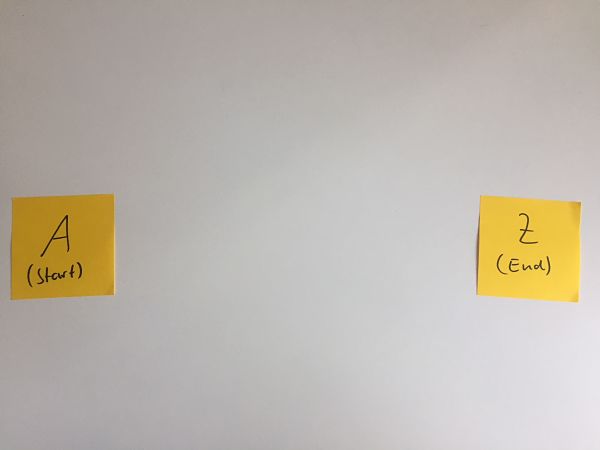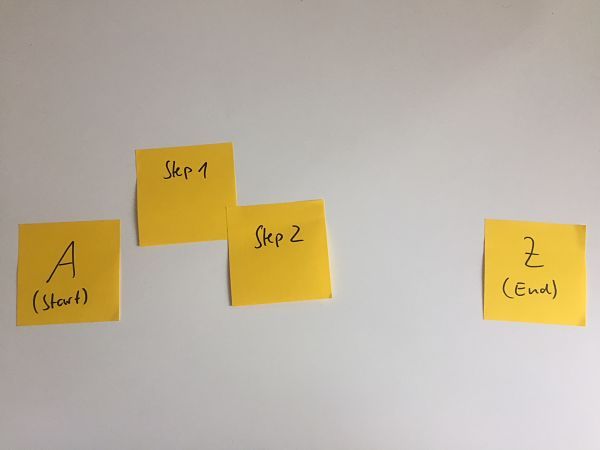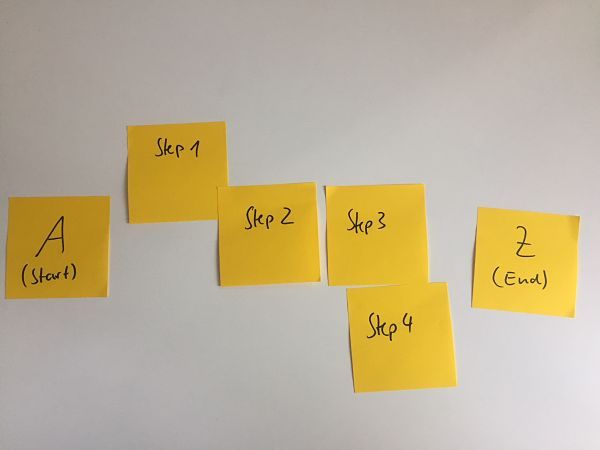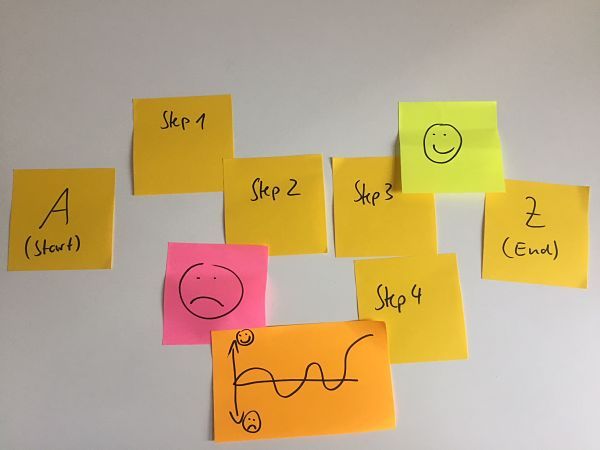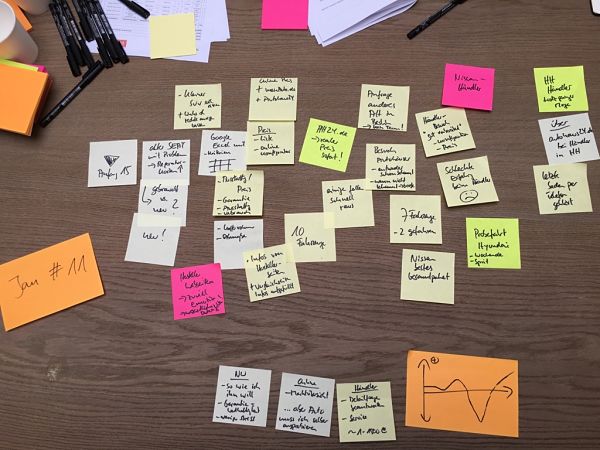Personal interviews are an effective way to gain empathy for customers and their customer journey: What do customers experience and – most importantly – why? What points of contact do they have? Which information sources do they use? Where are problems and what runs ok? Without answers to these and many more questions it will be difficult to develop matching products. The most effective way to generate this are personal interviews.
But even for simple cases it is quite difficult to conduct and document personal interviews so that all relevant questions will be answered and understood by the interviewer. Also, even after only three interviewees it is a challenge to remember who experienced what in detail. Both problems can heavily limit the benefit of interviews and the syntheses of the results.
The Post-it-Customer-Journey-Method is a simple tool to get the maximum out of the most important part of a personal interview:
After the usual interview introduction, the method starts with two simple questions:
- “When did you start to think about [topic A] and what was the trigger?” and
- “When did you reach [endpoint Z]?”,
while [topic A] and [endpoint Z] depend on the given subject, of course.
The interviewing person notes both answers on post-its and puts them left and right in front of the interviewee, so that start and end of the relevant customer journey are set.
Once start and end are defined, the space in-between must be filled with all relevant steps to get to the full picture of the customer journey. For this, the interviewer asks the same question over and over again: “What did you do after this step, and why?”, notes the most important aspects right away and sticks them one by one in front of the interviewee.
Even though all interview candidates should have gone through the relevant journey only recently, nobody can remember all important aspects right away. While more and more pieces of the customer journey are added over time, the interviewer should therefore reflect the status quo frequently: “I understood that you started A because of X and you wanted to reach Y. After that you did B, because of this and that. Is that correct? Is there anything that we did not discuss so far?”.
Through this constant repetition it will become easier for the interviewee to reflect on all relevant aspects and as a by-product, the empathy level of the interviewer will be increased.
Generally, it is beneficial to follow the customer journey chronologically, but it is quite common to jump back and forth and re-arrange some post-its throughout the interview.
In most cases all answers to the open research questions will be generated automatically. However, all interviews need to have a checklist prepared upfront as a backup to really cover all points of interest. Examples: “Which role did X have in this phase?”, “Which websites do customer use at this point?”, “Which devices do customers use in order to do X?”, …
When the customer journey is complete and also repeated questioning does not reveal any new things, the whole customer journey should be reflected once more. Based on this overview, the interviewee can highlight negative and positive aspects. As option, the interviewee can also draw an overall mood curve at the end on a bigger post-it to get a summary of the whole journey.
The overall result should look like this:
The following picture shows a real example:
In comparison to a normal personal interview where the customer journey is only being discussed and documented in a more or less structured way (possibly by several people in parallel), the Post-it-Customer-Journey-Method makes all single steps of the journey instantly explicit in front of both, interviewer and interviewee. This has several benefits:
- Interviewees will have a much easier time to cover the whole customer journey and missing aspects will be revealed automatically.
- For the interviewer it is much easier to drill-down into specific aspects and potential inconsistencies.
- Misunderstandings are avoided.
- A simple photo at the end is enough for a documentation of each journey and the following syntheses will be easier because of the given structure.
While all the benefits make qualitative interviews much more effective, at least one additional person should be in the room to take notes. A pre-defined structure for these extra notes is helpful, e.g. in form on an empathy map. Also, audio/video recordings are helpful – especially when the results need to be discussed with various stakeholders later on.
Next to the usual preparation, a structured interview guideline, a venue and the interviewees, the Post-it-Customer-Journey-Method requires the following materials:
- Lots of yellow post-its for the customer journey
- Red and green post-its to highlight the negative / positive aspects of the journey
- Some bigger post-its for the (optional) mood curve
- Paper for further notes
- Device for audio / video recording
Photo by jeanbaptisteparis on flickr under CC License.


